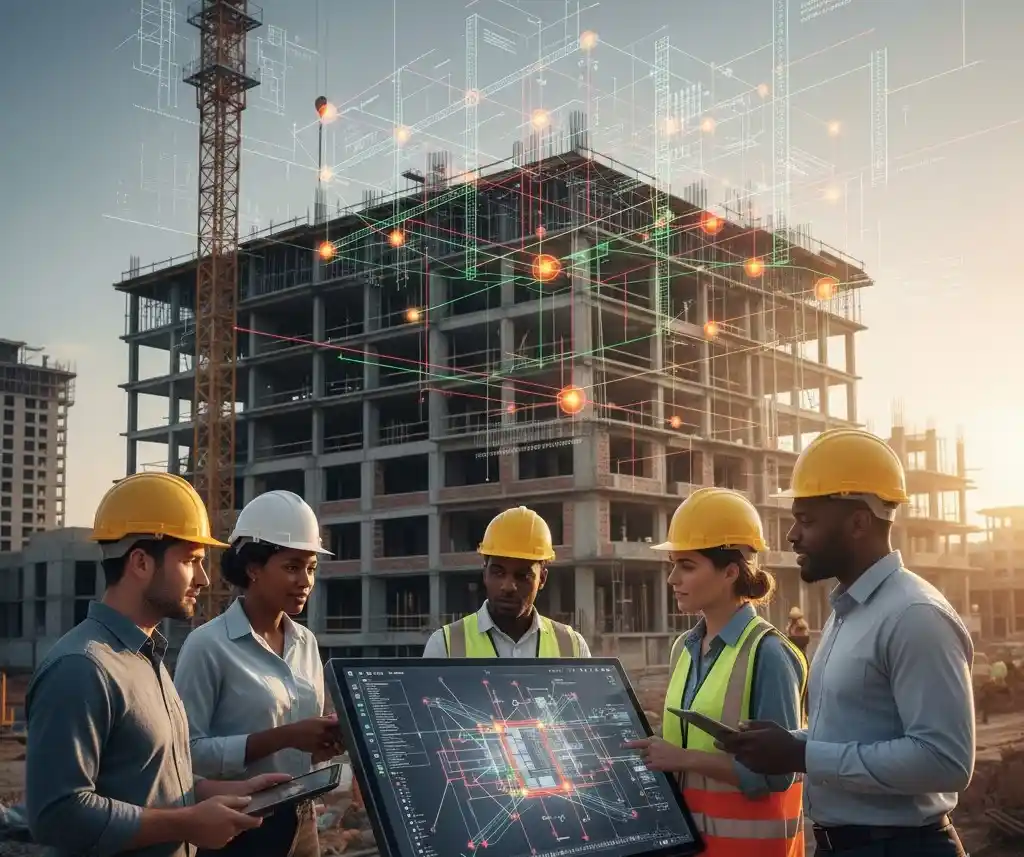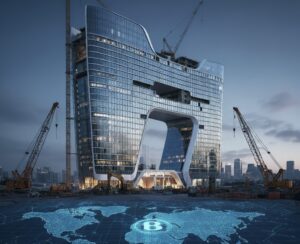In the fast-paced world of design and construction, where multiple disciplines come together on complex projects, even a single design error can lead to costly delays, material waste, and safety issues. This is where Building Information Modeling (BIM) and its intelligent coordination tools — especially clash detection — come into play.
The BIM clash detection benefits extend far beyond identifying overlapping elements in a 3D model. It’s about improving collaboration, enhancing efficiency, and ensuring every component of a building fits together seamlessly before a single brick is laid.
In this comprehensive guide, we’ll explore the benefits of BIM clash detection, why it’s indispensable in modern construction, and how it transforms project outcomes from planning to completion.
What Is Clash Detection in BIM?
Before diving into the benefits, let’s recap what clash detection means in the context of BIM.
Clash detection in BIM is a digital process that identifies conflicts within a 3D model when different building systems — architectural, structural, or MEP (Mechanical, Electrical, and Plumbing) — intersect or interfere with one another.

For example:
- A beam cutting through a ventilation duct is a geometric clash.
- An electrical conduit placed too close to a sprinkler line is a clearance issue.
- A schedule conflict between plumbing installation and ceiling framing is a workflow clash.
By detecting and resolving such issues in the preconstruction phase, BIM clash detection ensures smoother, more cost-effective, and error-free execution on-site.
Why BIM Clash Detection Matters
In traditional construction workflows, design errors often go unnoticed until construction begins, resulting in expensive change orders and schedule overruns.
With BIM clash detection, potential conflicts are visualized and resolved virtually, reducing risk before they reach the physical site. The result? Greater design accuracy, better communication, and significant savings.
Let’s explore the key BIM clash detection benefits in detail.
1. Early Identification of Design Conflicts
One of the biggest benefits of BIM clash detection is that it allows teams to identify design conflicts early in the project lifecycle.
When 3D models from multiple disciplines are integrated into a federated BIM model, the software automatically detects areas where components overlap or interfere.
This proactive detection prevents problems from snowballing into major construction delays later.
Example:
A structural beam colliding with an HVAC duct can be detected in the BIM model during design coordination — instead of being discovered during installation, where it would cause days of rework.
Bottom Line: Early detection equals fewer surprises, faster project progress, and cost savings.
2. Reduced Rework and Cost Savings
Rework is one of the biggest cost drivers in construction projects. According to industry studies, design clashes can contribute to 5–10% of total project costs if not identified early.
BIM clash detection drastically reduces these costs by catching issues in the virtual model before they become real-world problems.
When every clash is resolved in the digital environment, there’s less need for material reordering, structural alterations, or labor reassignments on-site.
How It Saves Costs:
- Reduces site downtime due to unexpected changes.
- Prevents material wastage from demolition and reinstallation.
- Avoids contract penalties from project delays.
Result: More predictable budgets and higher project profitability.
3. Enhanced Collaboration Between Disciplines
Construction projects involve multiple disciplines working simultaneously — architects, civil engineers, structural designers, and MEP specialists. Coordination among these teams can be challenging without a unified platform.
The BIM clash detection process fosters seamless collaboration by integrating all design data into a shared 3D model. This allows stakeholders to visualize how their systems interact and where conflicts may occur.
Benefits of Collaboration Through Clash Detection:
- Improves transparency and accountability.
- Facilitates communication through visual clash reports.
- Allows teams to resolve issues collectively during coordination meetings.
In short: Clash detection is not just a technical check — it’s a communication tool that bridges the gap between disciplines.
4. Improved Project Scheduling and Workflow Efficiency
Another significant benefit of BIM clash detection lies in better project scheduling. Through 4D BIM integration (time-based modeling), teams can detect workflow clashes — such as two trades scheduled to work in the same area simultaneously.
Example:
If the ceiling grid installation is planned before the ductwork is completed, it creates an operational conflict. BIM clash detection identifies and resolves such sequencing issues in advance.
Key Advantages:
- Avoids scheduling overlaps.
- Improves task sequencing.
- Optimizes construction timelines.
By ensuring every activity is executed in the correct order, projects progress more smoothly, and delays are minimized.
5. Enhanced Design Accuracy and Model Quality
High-quality designs are the foundation of successful construction. BIM clash detection enhances model accuracy by ensuring all elements are coordinated and aligned with real-world constructability standards.
When each discipline continuously validates their models against others, design integrity is maintained throughout the project lifecycle.
Results:
- Models become more realistic and buildable.
- Reduces design discrepancies between drawings and actual conditions.
- Provides reliable data for prefabrication and fabrication processes.
Ultimately, clash detection transforms BIM models from mere visuals into data-rich construction blueprints.
6. Supports Prefabrication and Modular Construction
Prefabrication and modular construction depend heavily on precise design coordination. Any design error in the digital model can lead to costly fabrication errors in the factory or mismatched components on-site.
The BIM clash detection process ensures that every component fits perfectly by identifying and resolving clashes before fabrication begins.
Benefits for Prefabrication:
- Guarantees dimensional accuracy.
- Minimizes factory rework and on-site fitting issues.
- Enables faster assembly and installation.
This results in higher quality output and accelerated project timelines — critical advantages in today’s competitive construction landscape.
7. Reduced On-Site Conflicts and Downtime
One of the biggest operational benefits of BIM clash detection is minimizing on-site disruptions. Traditional construction methods often face unexpected clashes that require halting work to fix design inconsistencies.
By resolving these issues beforehand, teams can proceed with confidence and uninterrupted workflow.
Impact:
- Fewer RFIs (Requests for Information) during construction.
- Less time wasted waiting for revised drawings.
- Reduced labor idle time due to design errors.
In essence, clash detection creates a smoother, conflict-free construction experience on-site.
8. Improved Safety and Risk Mitigation
Safety and risk management are integral to every construction project. BIM clash detection contributes directly to safer site environments.
For instance:
- Avoiding overlapping systems reduces physical hazards during installation.
- Accurate spatial planning ensures compliance with clearance and access standards.
- Detecting routing conflicts in electrical or plumbing systems prevents operational risks.
By eliminating unforeseen clashes, the process also reduces the chance of last-minute improvisations — one of the main causes of on-site accidents.
Result: A safer, more predictable construction process with reduced human and financial risks.
9. Better Decision-Making and Visualization
BIM’s 3D visualization capabilities make clash detection results easy to interpret, even for non-technical stakeholders.
Decision-makers can visually see where and why clashes occur, improving communication and consensus during design reviews.

Advantages:
- Facilitates faster approvals.
- Helps prioritize which clashes to resolve first.
- Improves understanding for clients and investors.
This visual clarity leads to more informed decision-making and a stronger sense of collaboration throughout the project team.
10. Accurate Documentation and Transparency
Every clash identified, reviewed, and resolved is documented in BIM software. These reports serve as valuable records that improve accountability and project traceability.
BIM clash detection reports typically include:
- Clash IDs and types (hard, soft, workflow).
- Affected elements and responsible teams.
- Resolution notes and meeting logs.
Having this level of transparency ensures all team members are on the same page, fostering trust and professional accountability.
11. Improved Facility Management and Maintenance
The benefits of BIM clash detection extend beyond design and construction. Once the project is completed, the clash-free BIM model becomes an accurate as-built reference for facility managers.
Because every component in the model is correctly located and documented, maintenance teams can:
- Access precise data for future repairs or upgrades.
- Avoid unexpected interference when installing new systems.
- Plan maintenance operations with confidence.
This improves the long-term sustainability and operational efficiency of the building.
12. Enhanced ROI and Competitive Advantage
For construction firms and design studios, adopting BIM clash detection is not just about project efficiency — it’s a strategic investment.
Return on Investment (ROI):
- Projects are completed faster and within budget.
- Clients receive higher-quality deliverables.
- Companies gain a reputation for precision and reliability.
By integrating clash detection into their BIM workflows, firms position themselves as leaders in innovation, accuracy, and client satisfaction — setting them apart in a competitive market.
13. Sustainability and Resource Efficiency
Reducing rework, material waste, and on-site energy usage directly supports sustainability goals. By resolving issues early in the digital model, BIM clash detection minimizes the environmental impact of construction activities.
Sustainable Benefits:
- Fewer wasted materials.
- Lower carbon emissions from reduced transport and rework.
- Efficient resource utilization across trades.
Clash detection thus supports both economic and environmental sustainability in modern building projects.
14. Continuous Improvement Through Data Analytics
Modern BIM tools track and record every clash detection cycle. This data can be analyzed to identify recurring design issues, performance bottlenecks, or coordination inefficiencies.
Companies can use this insight to:
- Improve design standards.
- Enhance team training.
- Optimize future BIM workflows.
Over time, this leads to a culture of continuous improvement and operational excellence.
Conclusion
The benefits of BIM clash detection extend far beyond technical coordination — they represent a complete transformation in how construction projects are conceived, designed, and executed.
By detecting and resolving design conflicts early, teams can achieve:
- Cost savings,
- Improved collaboration,
- Safer sites,
- Higher quality, and
- Faster delivery.
In a world where precision, efficiency, and sustainability define success, BIM clash detection is not just a feature — it’s a necessity for forward-thinking construction professionals.





